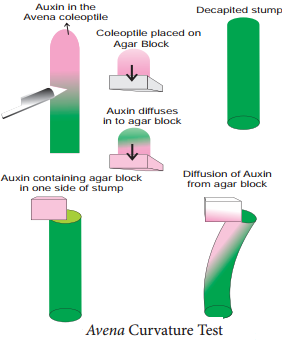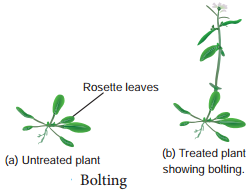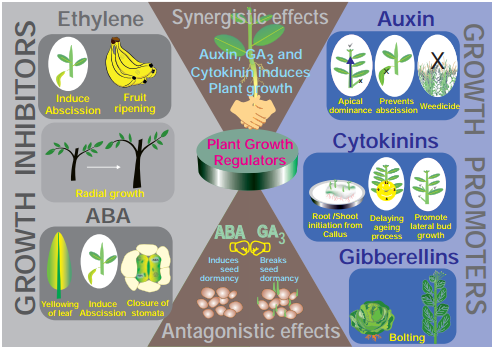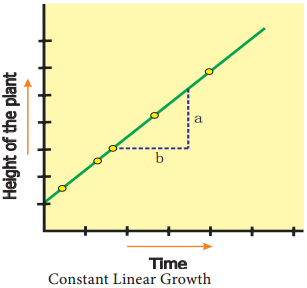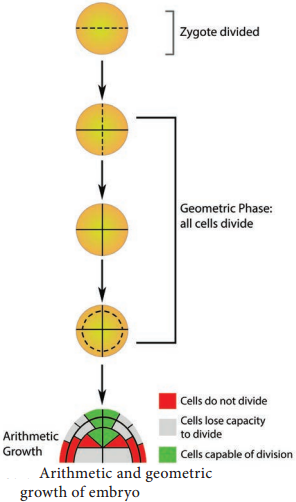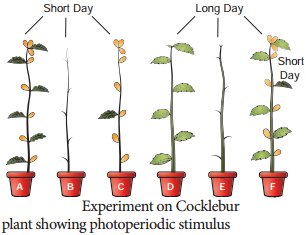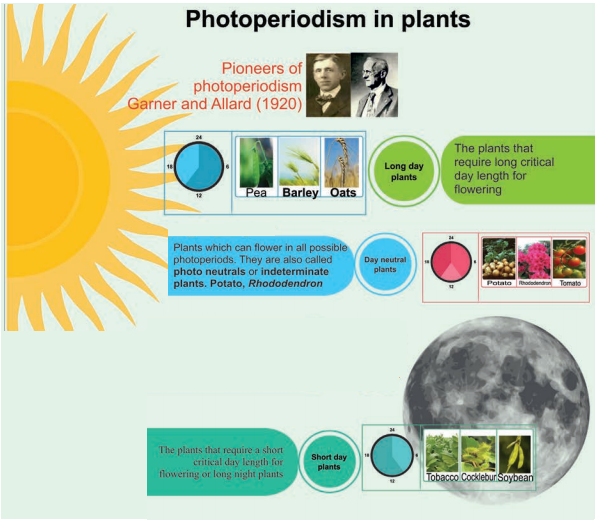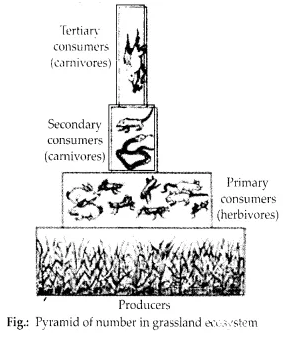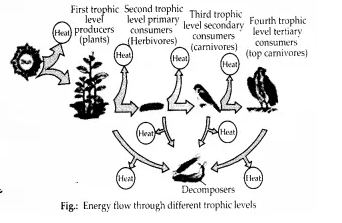Here we are providing NCERT Solutions for Class 11 English Hornbill Chapter 5 The Ailing Planet: the Green Movement’s Role. Students can get Class 11 English The Ailing Planet: the Green Movement’s Role NCERT Solutions, Questions and Answers designed by subject expert teachers.
The Ailing Planet: the Green Movement’s Role NCERT Solutions for Class 11 English Hornbill Chapter 5
The Ailing Planet: the Green Movement’s Role NCERT Text Book Questions and Answers
The Ailing Planet: the Green Movement’s Role Understanding the text
Question 1.
Locate the lines in the text that support the title ‘The Ailing Planet’.
Answer:
(a) “The earth’s vital signs reveal a patient in declining health.”
(b) a new awareness has now dawned upon the most dangerous animal (man) in the world.”
(c) “Are we to leave our successors a scorched planet of advancing deserts, impoverished landscapes and ailing environment?”
(d) “.. .In large areas of the world, human claims on these systems are reaching an unsustainable level, a point where their productivity is being impaired.”
(e) “When this happens, fisheries collapse, forests disappear, grasslands are converted into barren wastelands, and croplands deteriorate.”
(f) “…several species of life face extinction as a result of its destruction.”
(g) “It has been well said that forests precede mankind; deserts follow.”
(h) “The world’s ancient patrimony of tropical forests is now eroding at the rate of forty to fifty million acres a year, and the growing use of dung for burning deprives the soil of an important natural fertiliser.”
(i) “The World Bank estimates that a five-fold increase in the rate of forest planting is needed to cope with the expected fuel wood demand.” “….We were saying that we are losing the forests at an acre a second, but it is much closer to an acre-and-a-half to a second.”
(j) “.. .highlighted the near catastrophic depletion of India’s forests over the last four decades.”
(k) “India, according to reliable data, is losing its forests at the rate of 3.7 million acres a year.. .The actual loss of forests is estimated to be about eight times the rate indicated by government statistics.”
(l) “A three-year study warns that the environment has deteriorated so badly that it is ‘critical’ in many of the eighty- eight countries investigated.”
(m) “For the first time in human history we see a transcending concern—the survival not just of the people but of the planet.”
(n) “The environmental problem does not necessarily signal our demise, it is our passport for the future.”
Question 2.
What does the notice ‘The world’s most dangerous animal’ at a cage in the zoo at Lusaka, Zambia, signify?
Answer:
In the zoo at Lusaka, Zambia, outside a cage there is a notice that reads, “The world’s most dangerous animal.” Inside the cage there is no animal but a mirror where one can see oneself. It is an endeavour to make humans realise how destructive they are. They are the cause of the destruction of thousands of species. We have done this by destroying their habitats. This is an attempt to make human beings introspect about their destructive deeds. It is an attempt to help us realise the wisdom of shifting from a system based on domination to one based on partnership.
Question 3.
How are the earth’s principal biological systems being depleted?
Answer:
Mr Lester R. Brown in his book, The Global Economic Prospect, points out that the earth’s four principal biological systems fisheries, forests, grasslands, and croplands form the foundation of the global economic system. In addition to supplying our food, these four systems provide virtually all the raw materials for industry.
Human claims on these systems are reaching an unsustainable level, a point where their productivity is being impaired. As a result, fisheries collapse, forests disappear, grasslands are converted into barren wastelands, and croplands deteriorate. Since tropical forests are, in the words of Dr Myers, “the powerhouses of evolution”, several species of life face extinction as a result of their destruction.
Question 4.
Why does the author aver that the growth of world population is one of the strongest factors distorting the future of human society?
Answer:
Growing population is one of the strongest factors distorting the future of human society. A three-year study using satellites and aerial photography conducted by the United Nations, warns that the environment has deteriorated so badly that it is ‘critical’ in many of the eighty-eight countries investigated. India is losing its forests at the rate of 3.7 million acres a year. The actual loss of forests is estimated to be about eight times the rate indicated by government statistics.
The Ailing Planet: the Green Movement’s Role Talking about the text
Discuss in groups of four.
Question 1.
Laws are never respected nor enforced in India.
Answer:
Article 48 A of the Constitution of India makes available that “the State shall endeavour to protect and improve the environment and to safeguard the forests and wildlife of the country”. But the cause of unending distress is the fact that laws are never respected nor imposed in India.
For example, the Constitution says that “casteism, untouchabitity and bonded labour” shall be eradicated, but this has not happened even after several years of the functioning of the Constitution. A recent report of our Parliament’s Estimates Committee has highlighted the appalling exhaustion of India’s forests over the last four decades. India is losing its forests at the rate of 3.7 million acres a year but the actual loss of forests is likely to be about eight times more than this, despite laws.
Question 2.
“Are we to leave our successors a scorched planet of advancing deserts, impoverished landscapes and an ailing environment?”
Answer:
The earth’s four principal biological systems fisheries, forests, grasslands, and croplands form the foundation of the global economic system. In large areas of the world, human claims on these systems are reaching an unsustainable level, a point where their productivity is being impaired. According to Dr Myres, the tropical forests that are the powerhouses of evolution, as they house innumerable species, are facing extinction.
It has been said that forests pave the way for man’s survival while deserts come after the annihilation of life. The world’s tropical forests are now wearing away at the rate of forty to fifty million acres a year. Expressing his concern, Mr L.K. Jha, raised this question in the first Brandt report. He felt it was unfair to leave for our future generations a seared planet with a growing number of deserts, a landscape deprived of nutrients and natural beauty.
Question 3.
“We have not inherited this earth from our forefathers; we have borrowed it from our children”.
Answer:
For the first time in human history we see an excessive worry about the survival not just of the people but also of the planet. We have begun to take a holistic view of the very passport for the future. The emerging new world vision has ushered in the Era of Responsibility. It is a holistic view, an ecological view, seeing the world is not something to be exploited for our good but as an inheritance to be preserved for future generations.
Question 4.
The problems of overpopulation that directly affect our everyday life.
Answer:
Growing population is the main factor changing the future of human society. In 1800, the population was merely one billion. Another billion was added to it by 1900. By the twentieth century the population increased by another 3.7 billion. The present world population is estimated at 5.7 billion.
Every four days, the world population increases by one million. Controlling the population growth will improve our general health. Moreover, development may not be possible if increase in numbers continues. The rich get richer, and the poor produce children, which is the cause of their poverty. It adds to the number of unemployed persons. If this is not checked, the poor will die of starvation.
The Ailing Planet: the Green Movement’s Role Thinking about language
The phrase ‘inter alia’ meaning ‘among other things’ is one of the many Latin expressions commonly used in English.
Find out what these Latin phrases mean.
- prima facie – at first glance
- ad hoc – done for a particular purpose and not planned in advance
- in camera – in private; in a closed court
- ad infinitum – endlessly
- mutatis mutandis – including necessary changes
- caveat – warning or proviso; request to court
- tabula rasa – mind prior to experience; chance to start afresh
The Ailing Planet: the Green Movement’s Role Working with words
I. Locate the following phrases in the text and study their connotation.
- gripped the imagination of – captured someone’s interest
- dawned upon – became apparent
- ushered in – heralded or introduced something
- passed into current coin – invent or devise a word or phrase that is used in the present
- passport of the future – authorisation to take us to a brighter future
II. The words ‘grip’, ‘dawn’, ‘usher’, ‘coin’, ‘passport’ have a literal as well as a figurative meaning. Write pairs of sentences using each word in the literal as well as the figurative sense.
1. grip: The baby gripped my finger with her tiny hand.
- She would not loosen her grip on my arm.
- The suspense in the film held me in grip throughout the two hours.
- I found the book so gripping that I couldn’t put it down.
- The intruder turned towards me and I was suddenly gripped by fear.
- Rebels have tightened their grip on the city.
- I have packed a day’s change of clothing in the grip.
2. dawn:
- They walked all night and reached the village at dawn.
- Gradually the truth about him dawned on us.
3. usher:
- She ushered us into her office and offered us coffee.
- The new legislation should usher in a host of new opportunities for school leavers
- He works as an usher
4. coin:
- I asked for ten pounds in 20p coins.
- Allen Ginsberg coined the term ‘flower power’.
5. passport:
- Many refugees have arrived at the border without passports.
- Many students opt for business studies simply because it sounds like a passport to
a good job. - Beauty alone can be a passport to success.
The Ailing Planet: the Green Movement’s Role Things to do
1. Make posters to highlight the importance of the Green Movement.
2. Maintain a record of the trees cut down and the parks demolished in your area, or any other act that violates the environment. Write to newspapers reporting on any such acts that disturb you.
32/4, Mehrauli, New Delhi
12 February 20XX
The Editor
Navyug Times
Kasturba Gandhi Marg, New Delhi-1
Subject: Malls trampling Delhi’s green belt
Dear Sir,
Part of the Aravalli range, the Delhi Ridge, is an icon of greenery and part of the capital’s heritage. But over the years, much of the Ridge has disappeared, with the most recent threat coming from swanky hotels and malls.
The Ridge is home to many endemic plant species and still remains an important visiting stop to many migratory birds as they journey onwards to other parts of the subcontinent. Moreover, it cools the hot winds from the deserts of the neighbouring state of Rajasthan before they reach the city and stashes away welcome raindrops to boost dipping groundwater levels.But over the years, much of the Ridge has disappeared under the brick and mortar that now define most Indian cities.
A worst-case scenario is on display in the Ridge area in Vasant Vihar, where trees are being cut down to build swanky hotels and malls. Such expansion that puts more soil under cement and replaces forested areas with concrete is profoundly altering the environmental landscape. The health of our natural endowments has now become the source of much anxiety and consternation amongst the residents of the area.
We remain unclear as to both the quality and the quantity of our ecological footprint and whether we have taken actions that will lead to negative short-term and long-term environmental consequences. It is essential to halt this march towards destruction of the Ridge. The Ridge forest is protected under the master plan and must remain so. Residents must actively protest against this degradation of their environment.
Yours sincerely,
(Name …)


